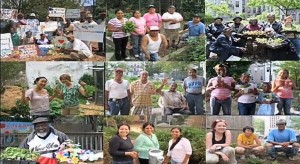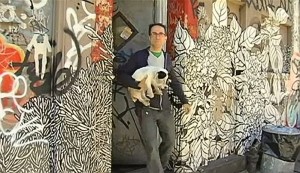Stoke Mandeville: Ludwig Guttman’s Paralympic Vision
The First-Ever Scheduled Paralympics Games
With the start of the 2012 Paralympics only hours away, athletes, spectators, performers, celebrities, and royalty prepare in anticipation. This is the second biggest sporting event ever to have been organised in Britain, after the 2012 Olympics.
The last time the Olympic Games were held in London was in 1948, which happens to be the same year that Israel was declared independent, and it was also the year in which the precursor of the Paralympics games took place.
This was held in the British village of Stoke Mandeville as an event for injured World War II veterans. It was the first ever organised sporting event for the disabled and was to become the inspiration for the birth of the Paralympic Games.
It was intentionally scheduled to coincide with the official Olympics in Britain amd was the result of Ludwig Guttmann’s revolutionary approach to spinal cord injury treatment.
Guttmann’s mission was to provide paralysed war victims with an outlet for rehabilitation. He implemented his revolutionary methods at a time when disabled people were simply left in their beds to die. With very little specialist care available a person with spinal injury had an average life expectancy of two years as a disabled person.
The stadium for the Paralympics games still stands next to the Stoke Mandeville Hospital where the National Spinal Injuries Centre is located. It was renamed as the Ludwig Guttmann Sports Centre for the Disabled after Ludwig Guttmann died in 1980.
The Current Gaming Line-Up
Several websites have already posted this year’s gaming schedule. Competitions will take place in the categories of swimming, cycling, archery, basketball, volleyball, tennis, fencing, rugby, judo, powerlifting, equestrian shows, and more. Certain opening, victory, and closing celebrations also will take place during the 2012 Stoke Mandeville Games.
Meet the Superhumans from STITCH on Vimeo.
Ludwig Guttmann: Believing in the Future
Ludwig Guttmann, was born in a Jewish family in Germany in 1899 and fled from Nazi Germany just before the start of World War II. He first began his career working in a medical hospital in Konigshutte where he treated accident victims. This medical centre is where he had his first experience treating a spinal cord injury patient who died five weeks later of sepsis.
Guttmann continued to persevere in spite of this early unfortunate experience. He then worked in various hospitals over the years. Places where he was employed include the Jewish Hospital in Breslau where he became director in the 1930s, and the present-day Stoke Mandeville Hospital.
At this time, the medical fraternity disagreed with many aspects of his approach to rehabilitation, but despite being banned from practicing medicine in 1933, Guttmann continued to make a mark in the world. His vision was to give patients who would otherwise die an early death the chance to live as normal and as productive of a life as possible.
The experience of having or originally arrived as a refugee in the UK, and being forced to re-start his own life from scratch gave Guttmann a unique perspective which provided insight for his work with people who effectively also had to rebuild their own lives. Guttmann always emphasised the importance of looking ahead and not dwelling on the past.
“Ludwig Guttmann once said, “If I ever did one good thing in my medical career it was to introduce sport into the rehabilitation of disabled people”.
This is still true today and manifests itself through the organisation WheelPower, the national charity for wheelchair sport whose base is at Stoke Mandeville Stadium, which he established as the British Paraplegic Sports Society and which aims to transform lives through sport. Providing opportunities for young and newly disabled people to benefit from participation in sport is key to their rehabilitation and personal development.” Martin McElhatton, Chief Executive, Wheelpower – British Wheelchair Sport
One Patient’s Story
Daniel Alaile is one person who was admitted to the Stoke Mandeville Hospital’s Ludwig Guttmann Sports Centre in 2010. At this time, Alaile was just 16 years old when he was stabbed in a gang-related fight, leaving him barely able to move and in constant pain.
Part of Alaile’s rehabilitation regimen included wheelchair basketball and he was placed in a room with parallel bars, massage tables, and walking frames. He says this experience has given him hope, and he also stated at the time of his treatment that he just didn’t want to feel sorry for himself.
“After injury Guttmann focussed an individual’s mind on what they can do rather than regretting what they can no longer do. Through sport Guttmann gave that person back the will to live a full life with pride and self-respect”. Bob Paterson, IWAS
Read More
Guerrilla Gardening: Community Led Regeneration
When I first heard of the guerrilla gardening concept just a few days ago I was fascinated. Then I realized, I also was a part of this effort while I lived in New York almost twenty years ago.
 My Story
My Story
Back in 1995, I remember planting bushes and trees on the streets of Corson Avenue and Victory Boulevard in Staten Island, NY. It was the thrill of knowing that green will prevail in spite of the industrialization of this location.
I felt empowered to be a part of this, even if it was only one time. I do not recall asking for permission from property owners, and if not that would be one prime example of guerrilla gardening. Furthermore, I often passed by community gardens present in downtown Manhattan. One of the most famous of all local landscape projects of this type is the Liz Christy Community Garden. It is found on Bowery at Houston Avenue, nearby Second Avenue.
Now this spot resides with permission of the city, so it really is more thought of as a community led regeneration project. However, the name of the organization that is very actively involved in outdoor projects like this is the Green Guerillas. Therefore, it often is referred to as a guerrilla gardening plot.
About the Liz Christy Community Garden
It was founded under the name First Community Garden in 1973. However, the presence of it dates back to the 17th century which then the location of it was Bouwerie and North Street.
From the mid-1970s onward the Green Guerillas took over the planting and care of it. Then, in 1986 it was dedicated to Liz Cristy, it’s founder. Over the past two decades, this garden has continued to flourish as a result of local dedication of passionate community regeneration volunteers.
It is open to anyone who wishes to take a nature walk or sit and relax somewhere along the path of vast shades of wildflowers and diverse types of greens. Pets and children are allowed, as long as they are kept under careful supervision. Anyone also can become a member and after 20 hours of volunteer service they can obtain a garden key.
Any flowers, bushes, or trees planted are there for the enjoyment of all but of course they don’t want anyone to touch-just look! Over the years, fruit trees, berry bushes, and vegetable plants have grown here. Guerilla gardening members have also planted redwoods and birches as well as flowering perennials and annuals.
 Other New York Gardens
Other New York Gardens
The NY York community led regeneration and guerillas gardening project also has brought continual life to other gardens.
Example sites include Papa and Mama Jones’ Community Garden in Brooklyn, The West Side Community Garden in Manhattan, and the Two Coves Community Garden in Queens.
Flora that can be find in various New York plots include geraniums, trillium, apples, tulips, orchids, and violets. Greens and flowers are implanted year round, and as a result something is always blooming at one of these community led gardens.
New York’s first Community Garden
http://www.lizchristygarden.us/
Read More


